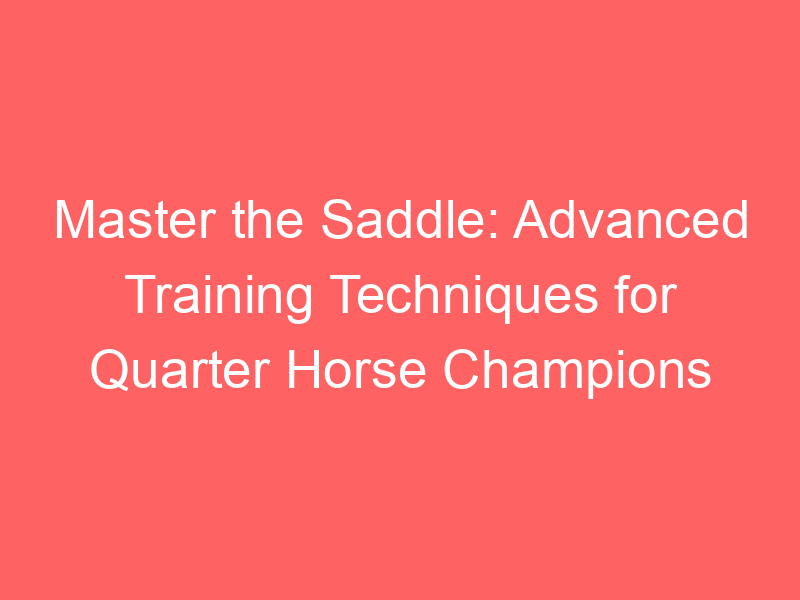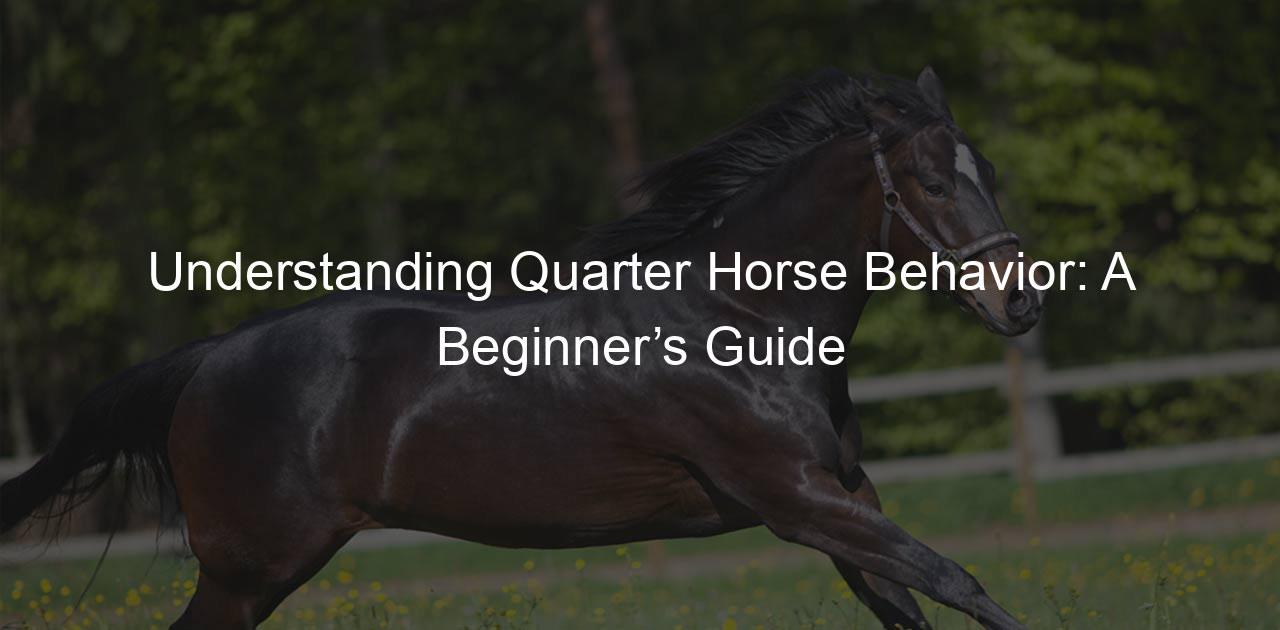
Introduction to Advanced Quarter Horse Training
Welcome to the world of advanced quarter horse training! This is where you take your horse’s skills to the next level. Whether you’re a seasoned equestrian or a beginner, understanding the importance of advanced training and the key differences between basic and advanced training is crucial. Let’s dive in!
- Understanding the Importance of Advanced Training
- Key Differences Between Basic and Advanced Training
Advanced training is not just about teaching your horse new tricks. It’s about building a stronger bond, improving communication, and enhancing your horse’s physical and mental health. A well-trained horse is a happy and safe horse. Advanced training can also open up new opportunities for you and your horse, from competitive events to more challenging trail rides.
Basic training lays the foundation for your horse’s skills. It involves teaching your horse to understand and respond to basic commands, like walking, stopping, and turning. It’s like teaching a child to read and write.
On the other hand, advanced training is like teaching a child to write an essay. It involves more complex skills and commands. For example, in advanced training, you might teach your horse to perform a specific gait, jump over obstacles, or respond to subtle cues from your body language. It requires a higher level of understanding and communication between you and your horse.
In the next section, we’ll delve into some essential equestrian training techniques that can help you take your horse’s skills to the next level. Stay tuned!
Essential Equestrian Training Techniques
Training a horse is a rewarding and challenging task. It requires a deep understanding of the horse’s needs, capabilities, and a consistent approach. Let’s delve into some professional quarter horse training techniques that can help you in this journey.
Professional Quarter Horse Training Techniques
- The role of consistency in training: Consistency is key in horse training. It helps the horse understand what is expected of it and builds trust between the horse and the trainer.
- Importance of a balanced diet and regular exercise: A healthy horse is a happy horse. A balanced diet and regular exercise are crucial for the horse’s physical and mental well-being.
- Mastering the Canter: The canter is a controlled, three-beat gait that is faster than a trot but slower than a gallop. It requires balance, rhythm, and coordination.
- Perfecting the Gallop: The gallop is the fastest gait of a horse. It requires strength, endurance, and agility. Training your horse to gallop perfectly can be a game-changer in competitions.
- Advanced Jumping Techniques: Jumping is not just about height, but also about technique and timing. Advanced jumping techniques can help your horse clear obstacles with ease and grace.
- Building endurance and strength: Endurance and strength are vital for a horse’s performance. Regular exercise and a balanced diet can help build these.
- Improving agility and speed: Agility and speed are crucial for a horse’s performance in competitions. They can be improved through regular training and exercises.
- Effective communication with your horse: Understanding your horse’s signals and communicating effectively with it can make training more efficient and enjoyable.
- Strategies for staying calm under pressure: Staying calm under pressure is crucial for both the horse and the trainer. It can be achieved through regular practice and mental preparation.
- Case Study 1: From Novice to Champion: This case study explores the journey of a novice horse and its trainer to becoming champions. It highlights the importance of consistency, patience, and understanding the horse’s needs and capabilities.
- Case Study 2: Overcoming Obstacles: This case study focuses on how a horse and its trainer overcame various obstacles through effective communication, agility, and speed training.
- Understanding your horse’s needs and capabilities: Every horse is unique. Understanding your horse’s needs and capabilities can help you tailor your training approach and achieve better results.
- Consistency and patience in training: Training a horse is a long-term commitment. It requires consistency and patience. Remember, slow and steady wins the race.
- Preparation for competitions: Preparing for competitions involves not just physical training, but also mental preparation. It is important to stay calm, focused, and confident.
Remember, every horse is unique and requires a tailored approach. With patience, consistency, and understanding, you can train your horse to be a champion.









